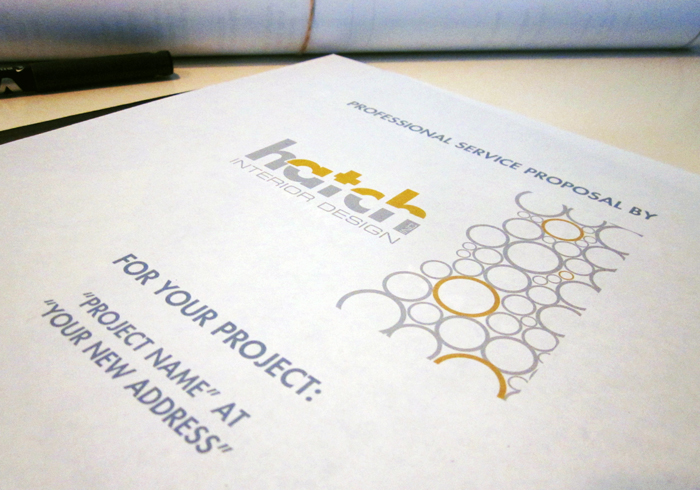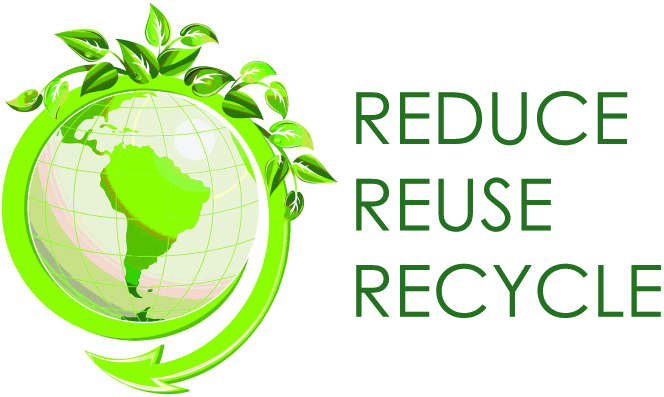Part 1 of our ‘How-to’ series, ‘How to Select an Interior Designer’, provided some advice to those in search of the right Interior Designer for their commercial project. Here, part 2 of the series, we describe in more detail how to put together an effective Request For Proposal (RFP). An RFP outlines important information for designers to ensure that they fully understand the parameters of your project and are able to provide an appropriate proposal. It also aids in the proposal review process making it more likely that you are comparing apples to apples. Putting together the necessary information for a complete RFP may also be an exercise that you find valuable in evaluating the goals, objectives, and boundaries of your project.
The more information you can provide, the better. A well thought out and accurate RFP will save time for both you and your designer, and will also save you money in the long run. You may not have information to provide regarding all of the items listed below (there may be some that are revealed during the design process), but any insight you can provide from the get-go is beneficial to your project and to the designers you’ve invited to prepare proposals.
What to Include in an RFP
First provide general information about your company and space.
- Name of your company and the specific person to contact in regards to your project. Include the company’s current address, telephone number, email and website address.
- Explain a bit about your company. What kinds of products or services do you provide? Who is your target market?
- Outline the reason for the project. ie. require more space, updating your existing space, rebranding, increasing functionality, etc.
Next you will define the objectives and specific information pertaining to your project.
- Overview of the project. Renovation? Relocation? Expansion? New construction?
- What are your objectives? What do want to achieve with your project? ie. a space that reflects your company’s mandate and branding, a space that inspires your employee’s creativity, utilizing your existing space more effectively, etc.
- Project location.
- Desired construction start date and completion date.
- Size of the space in square feet or metres.
- Your budget for consultant fees and construction. Read on for further detail on this subject.
- The number of employees you have.
Thirdly start to think about and record the specific needs that the Interior Designer must address and accommodate.
- What types of spaces will you need? Indicate how many and/or the total area required. ie. reception/waiting, offices, sales floor, fitting rooms, staff room, boardroom, storage, etc.
- Importance of sustainable practices and if you would like to achieve a LEED (Leadership in Energy and Environmental Design) designation.
- Any other information specific to your project that may be valuable to the Interior Designer. ie. elaborate on any special requirements that your project has.
Another important topic to address is your project’s budget.
Divulging your budget to a potential Interior Design candidate is beneficial for a couple of reasons: a) potential designers should be able to provide insight on whether or not the budget is practical for the project, b) the designer you hire will be able to work within a realistic budget to ensure your project meets this criteria.
- Provide your best estimate project budget.
- Outline what is to be covered within this budget. ie. design and consultant fees, construction, furniture, permits, contingencies, sales tax, etc.
- Let the designer know if you are planning to lease fixtures and/or furniture.
Outline in the RFP what information you have available to the designer regarding the existing space.
Existing drawings that you can acquire should save you time and money, and will provide useful information for the designer in both preparing their proposal and during the design process. Drawings are sometimes available through the landlord, facilities manager, or Real Estate agent.
- Base building drawings, hardcopy or digital.
- Drawings of existing space, hardcopy or digital. This may include architect and engineer’s drawings.
Let the candidates know if you have existing furniture, fixtures or equipment that you will be reusing for your new space.
At this stage the information pertaining to this can be somewhat general, explaining that you will reuse your existing office furniture or that the space you are moving into has a fantastic reception desk that may work perfectly for you.
It often helps for the designers to be able to take a look at the new space or space being renovated.
If you have access to your new space you may include a date and time that candidates may view the site, or set up individual walk-through’s with interested designers.
List the services you expect your Interior Designer to provide.
This typically includes the programming stage to the project administration stage, but there are some optional services throughout the process that you may or may not want. This condensed list will provide an idea of what is and what can be included in each stage of the design process:
Programming
- Investigate and explore the Client’s goals and listen to their ideas.
- Develop an in depth program to address needs and wants of the Client.
Schematic Design
- A site measure of your new or existing space.
- Updates to the owner provided CAD drawing based on existing site.
- Creation of CAD drawing based on existing site conditions.
- Review of building code & local regulations as it pertains to your project.
- Space plan(s).
Design Development
- Basic design development sketches of key ideas and millwork.
- Presentation of recommended finishes, fixtures, and furniture.
- Perspective renderings of the design concept through 3D modeling.
Contract Documents
- A complete set of interior design construction drawings (ready for permits, pricing, and construction): floor plans, ceiling plans/basic lighting plans, basic electrical plans, elevations, details/sections, and finish specifications.
- Coordination with other project consultants.
- Preparation of project phasing plan.
Project Tender
- Preparation of all materials required for building permit application by Client.
- Identifying potential General Contractors/Project Managers to provide a competetive bid on the project.
- Communications with bidders during tender.
- Review of submitted bids with Client.
- Coordination of contract between Client and selected General Contractor/Project Manager.
Project Administration
- Communication with General Contractor over the course of construction.
- Site visits to review any deficiencies and inspect completed work.
- Follow-up documentation as needed to monitor changes and provide direction to the General Contractor.
- Review of progress payment applications as submitted by General Contractor.
Furniture, Fixture and Equipment (FF and E) Procurement
- Coordinate delivery and installation of FF and E.
Going through the above items and preparing an RFP document outlining as much information as possible will help to get your project off on the right foot. If you know what you want, it is easier for your designer to prepare for it. When your designer has the information they need to give you an accurate RFP there will be fewer surprises over the duration of your project. Don’t get us wrong, we do like surprises… but the ones we like involve unexpected weekend road trips or come wrapped in pretty paper, not added cost and extended schedules!
» Renovating or moving your business into a new space and looking for an Interior Designer? Contact Hatch Interior Design located in Kelowna, British Columbia – Sustainable Interior Design Solutions for the Modern Workplace.


